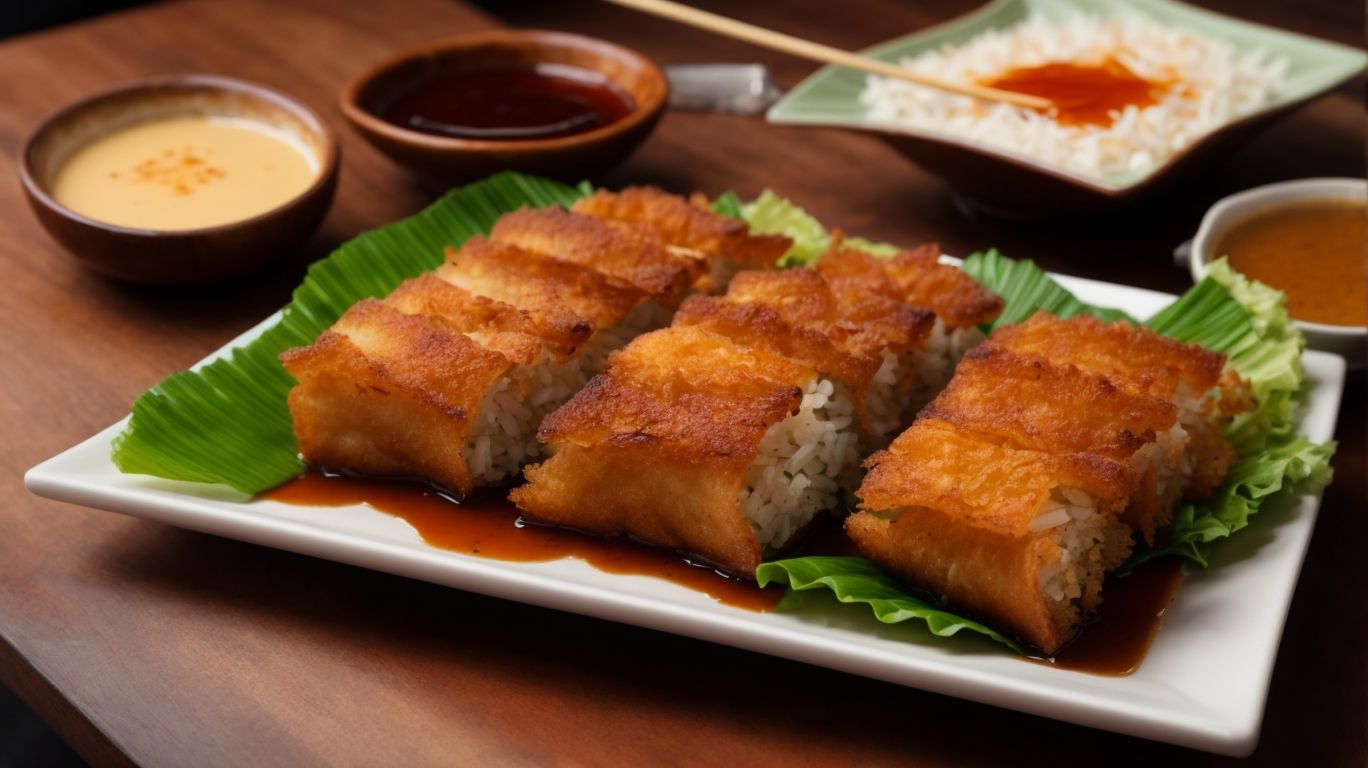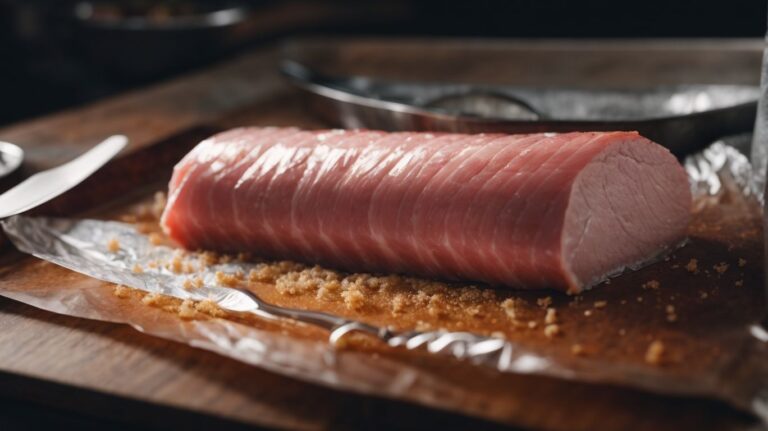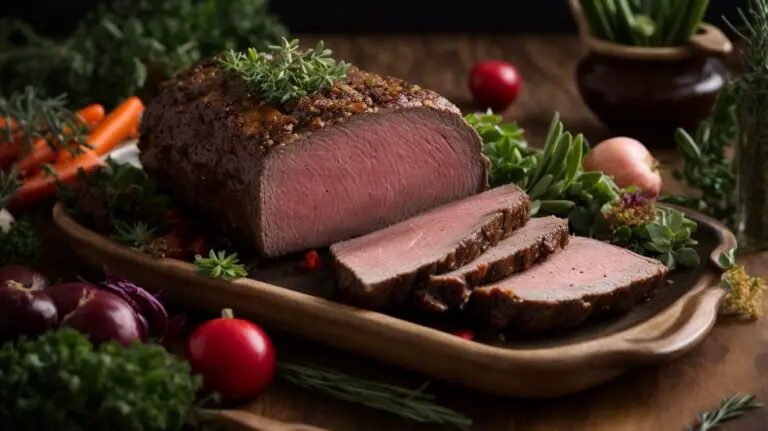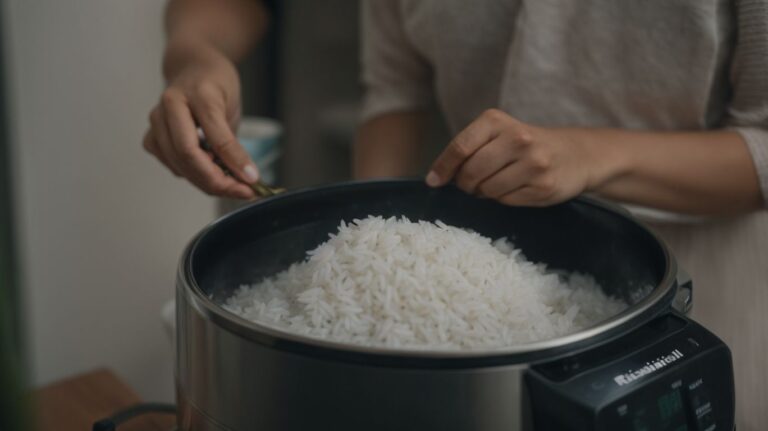How to Cook Perfect Lechon Kawali?
Are you ready to learn how to cook the perfect Lechon Kawali?
We explore the delicious Filipino dish and provide you with a step-by-step guide on how to prepare and cook it to perfection.
From the essential ingredients to the cooking techniques and tips for achieving the best results, we’ve got you covered.
Get ready to tantalize your taste buds with the mouthwatering flavors of Lechon Kawali.
Key Takeaways:
About Chris Poormet and “Poormet.com”
Chris Poormet, the renowned former chef and owner of Poormet.com, a distinguished blog recognized for its exquisite recipes and culinary tips, has earned the prestigious title of Culinary Blogger of the Year with his exceptional skills in food photography.
Chris Poormet’s culinary journey began in the kitchens of renowned restaurants, where he honed his craft and developed a passion for creating innovative dishes that blend flavors and textures harmoniously.
His commitment to sharing his culinary expertise led him to launch Poormet.com, a platform that quickly gained popularity for its unique approach to food blogging, offering readers a blend of delicious recipes, insightful cooking techniques, and captivating storytelling.
Through his blog, Chris has inspired a global audience to explore new flavors, experiment with diverse ingredients, and appreciate the art of cooking as a form of creative expression.
What is Lechon Kawali?
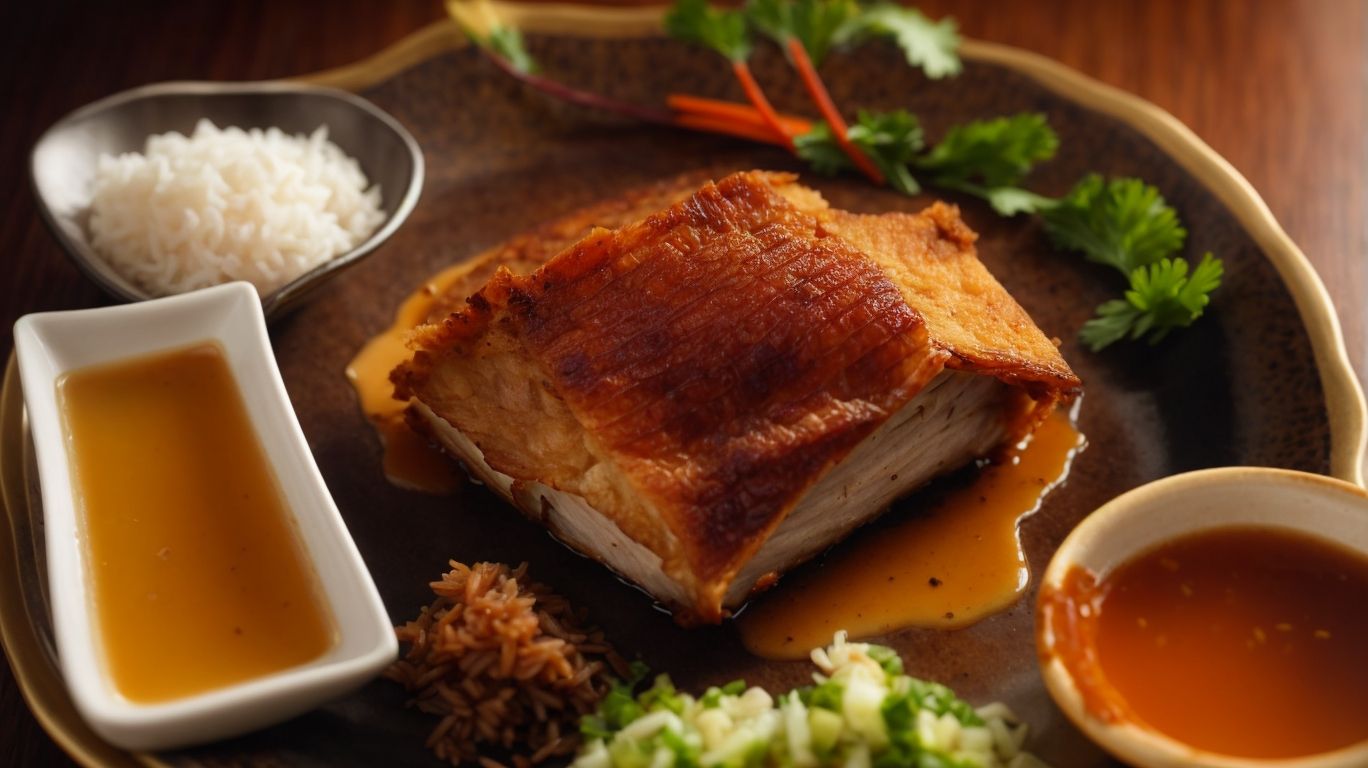
Credits: Poormet.Com – Brandon Robinson
Lechon Kawali, a beloved Filipino dish, is a delectable crispy pork belly delight that tantalizes taste buds with its savory flavors and irresistible crunch.
Originating from the Philippines, Lechon Kawali holds cultural significance as a staple in festive gatherings and special occasions, symbolizing abundance and joy. The preparation method involves boiling the pork belly to tenderize it before deep-frying to achieve that sought-after crispy exterior. Key elements such as the use of vinegar, soy sauce, garlic, and bay leaves in the boiling process infuse the meat with rich flavors. The final touch lies in the double frying technique, ensuring a perfect balance between a crispy outer layer and a juicy, flavorful interior.
Ingredients for Perfect Lechon Kawali
To achieve the perfect Lechon Kawali, essential ingredients such as succulent pork belly, aromatic garlic, flavorful bay leaves, and a blend of seasoning must harmonize to create a culinary masterpiece.
One of the key components that contribute to the rich and crispy texture of Lechon Kawali is the succulent pork belly. The meat is selected for its perfect balance of fat and lean meat, ensuring a juicy interior and a crispy exterior when cooked to perfection. Aromatic garlic infuses the dish with its distinctive flavor, enhancing the overall taste profile of the dish.
- When combined with the earthy aroma of flavorful bay leaves, the garlic elevates each bite of the crispy pork belly to a delightful sensory experience.
- The seasoning plays a crucial role in balancing the flavors, typically a mix of salt, pepper, and other spices, adding depth and complexity to the dish.
Pork Belly
The selection of high-quality pork belly is paramount in the preparation of Lechon Kawali, ensuring a tender meat texture, optimal seasoning absorption, and the hallmark crispy skin that defines this dish.
Regarding choosing the perfect cut for Lechon Kawali, look for a piece with a balanced ratio of meat and fat, as this will contribute to the tenderness and juiciness of the final dish. Pork belly is preferred due to its rich flavor and juicy meat that pairs perfectly with the crunchy skin. The quality of the pork belly also determines how well it absorbs the marinade and flavors, enhancing the overall taste profile. The thickness of the skin plays a crucial role in achieving that coveted crispy texture that is a hallmark of this Filipino favorite.
Salt
Salt serves as a fundamental component in the seasoning of Lechon Kawali, enhancing flavors, tenderizing the meat, and contributing to the desired crispy texture through a meticulous boiling process.
When added to the Lechon Kawali recipe, salt plays a crucial role in not only bringing out the natural flavors present in the meat but also in promoting meat tenderization by breaking down the muscle proteins. This tenderization effect helps ensure a juicy and succulent texture in the final dish. As the meat boils, the salt aids in drawing out excess moisture, resulting in a crispy exterior that is coveted in this Filipino dish. The balance of salt is key in enhancing the overall taste profile and achieving that perfect combination of flavors.
Pepper
Pepper, a versatile seasoning agent in Lechon Kawali, adds a burst of flavor, aromatic richness, and a touch of spice that balances the overall taste profile of this iconic dish.
Apart from its flavor-enhancing properties, pepper also plays a crucial role in bringing out the natural richness of the pork used in Lechon Kawali. The aromatic depth pepper provides blends seamlessly with the savory notes of the meat, creating a symphony of flavors that dance on the palate.
Furthermore, pepper not only acts as a seasoning but also contributes to the visual appeal of the dish with its sprinkled specks of dark color that add contrast to the golden-brown crispy exterior of the pork. This aromatic spice is a staple in Filipino cuisine, and its inclusion in Lechon Kawali is essential for achieving that authentic, flavorful experience.
Garlic
Garlic, a staple ingredient in Lechon Kawali, imparts a robust aroma, savory flavor, and plays a vital role in the marination process, ensuring a thorough infusion of taste throughout the dish.
Known for its pungent yet sweet undertones, garlic is a versatile ingredient that elevates the overall taste of Lechon Kawali. Its distinct aroma not only fills the kitchen with an irresistible fragrance but also enhances the meat’s natural flavors, creating a harmonious blend that tantalizes the taste buds.
When used in the marinating stage, garlic permeates the meat, tenderizing it while infusing it with its unique essence. This ensures that every bite of the crispy Lechon Kawali is a burst of savory goodness, thanks to the flavorful garlic undertones.
Bay Leaves
Bay leaves, known for their aromatic essence and flavorful impact, are a key seasoning element in Lechon Kawali that adds depth, complexity, and a hint of herbal infusion to this classic dish.
When simmered or braised, bay leaves release a subtle woodsy fragrance that permeates the entire dish, enhancing the overall dining experience. These dried leaves are carefully selected for their distinct aroma and are often used in marinades, soups, stews, and sauces to elevate the taste profile. Bay leaves are rich in essential oils and provide a slightly bitter undertone that balances the richness of meats, making them an essential component in Filipino cuisine.
Water
Water, a fundamental element in the preparation of Lechon Kawali, plays a crucial role in the initial boiling process, aiding in meat tenderization, rehydration, and setting the stage for subsequent cooking steps.
During the boiling phase, water helps break down tough connective tissues in the pork, leading to a more tender and succulent final dish. The water serves as a medium for flavors to infuse into the meat, enhancing its overall taste profile. This phase also helps rehydrate the meat, ensuring it remains juicy throughout the cooking process.
Preparing the Pork Belly for Lechon Kawali
The meticulous preparation of pork belly for Lechon Kawali involves a series of essential steps, including cleaning, boiling, and thorough drying, to ensure the meat’s readiness for the crispy transformation ahead.
In the cleaning process, it is crucial to thoroughly wash the pork belly under cold running water to remove any impurities or residue.
Next, boiling comes into play, where the pork belly is simmered in a flavorful broth infused with seasonings and aromatics until tender.
Once cooked, the pork belly is removed and carefully patted dry with paper towels.
The importance of thorough drying cannot be understated as it helps achieve that coveted crispy exterior during frying later on.
Cleaning the Pork Belly
The initial step in preparing pork belly for Lechon Kawali involves meticulous cleaning to ensure optimal hygiene, trimming excess fat, and preparing the skin for the desired crispy texture.
Ensuring the pork belly is thoroughly cleaned is crucial not just for hygiene but also for enhancing the flavors. Start by rinsing the meat under cold water, removing any lingering debris.
- Scrubbing the surface with salt helps to get rid of impurities.
- Swiftly patting the pork belly dry with paper towels is essential before proceeding.
- Trimming excess fat from the edges not only ensures an appealing appearance but also prevents excessive splattering during frying.
- Score the skin in a crisscross pattern to allow the fat to render evenly and achieve that signature crispy crackling.
Boiling the Pork Belly
Boiling the pork belly for Lechon Kawali is a critical step that enhances meat tenderization, allows for seasoning absorption, and facilitates flavor infusion to prepare the pork for the frying process.
When boiling the pork belly for Lechon Kawali, it is essential to ensure that the meat is completely submerged in water to promote uniform cooking. This method helps break down the tough connective tissues in the pork, resulting in a more tender texture. As the pork simmers gently, it creates an ideal environment for the flavors from spices, herbs, and aromatics to penetrate the meat deeply.
The slow boiling process not only softens the meat but also imparts a subtle background taste that elevates the overall dish. It fuses the natural juices of the pork with the added ingredients, enhancing the final taste profile and ensuring a succulent bite.
Drying the Pork Belly
Drying the pork belly post-boiling for Lechon Kawali is crucial to remove excess moisture, promote crispy skin formation, and prepare the meat for the frying process to achieve the desired texture.
After boiling, the pork belly is often laden with residual moisture, which, if not adequately dried, can impede the crisping of the skin during the frying stage. Air-drying the meat helps to further concentrate flavors and aids in the formation of that coveted crunchy exterior.
By ensuring the pork belly is thoroughly dried before frying, you set the stage for a Lechon Kawali with the perfect balance of texture—crispy on the outside while succulent and tender on the inside. This process of drying not only enhances the final dish’s aesthetic appeal but also elevates its overall taste profile, making it a culinary delight.
Cooking the Perfect Lechon Kawali
Achieving the perfect Lechon Kawali involves precise cooking techniques such as deep frying, infusion of aromatics, employing the double frying method, and ensuring proper resting before serving.
To ensure the perfect texture and flavor, the meat is first boiled with aromatics like bay leaves, peppercorns, and garlic, enhancing its taste. After boiling, the meat is dried and then deep-fried until it achieves a crispy outer layer. The double frying technique involves frying the meat once, allowing it to cool, and then frying it a second time for extra crispiness.
Once the Lechon Kawali is crispy and golden brown, it is crucial to allow it to rest before serving. This resting period helps redistribute the juices within the meat, ensuring a tender and succulent final dish.
Deep Frying the Pork Belly
Deep frying the pork belly for Lechon Kawali requires precise oil temperature control to achieve the perfect crispy crackling and ensure the meat is cooked to tender perfection.
When preparing Lechon Kawali, the initial step involves boiling the pork belly with aromatics until tender, then allowing it to air dry or refrigerate overnight to help achieve that coveted crispy skin once it hits the hot oil.
The key to ideal crackling is ensuring the oil is at the right temperature – too cold and the dish will turn out greasy. On the other hand, if the oil is too hot, the skin might burn before the meat cooks through. Achieving that balance is crucial. By carefully monitoring the oil temperature and allowing the pork to fry undisturbed, you can ensure a crispy, golden-brown exterior while keeping the meat inside moist and tender.
Adding Aromatics
Incorporating a blend of aromatics such as bay leaves and garlic enhances the seasoning profile, flavor complexity, and aromatic richness of Lechon Kawali, elevating its taste to culinary excellence.
Bay leaves, with their unique earthy and slightly floral notes, infuse a deep layer of flavor into the meat, creating a harmonious blend of aromas.
Garlic, known for its pungent yet savory essence, adds a robust kick to the dish, further enhancing its overall taste profile.
When combined, these aromatics work synergistically to permeate the Lechon Kawali with a multi-dimensional sensory experience, enticing both the palate and the olfactory senses. This infusion of flavors not only intensifies the dish’s taste but also imbues it with a rich, enticing aroma that tantalizes the senses even before the first bite.
Double Frying Technique
The double frying technique in Lechon Kawali involves a two-step frying process that enhances the dish’s crispy texture, optimizes oil absorption, and ensures a delightful crunch with each bite.
This method begins by boiling the pork belly in water with aromatics and spices until tender, then thoroughly drying it before the first fry. The initial fry partially cooks the meat and removes excess moisture, allowing for the formation of a golden crust during the second fry.
During the second fry, the pork belly is returned to the hot oil, resulting in a final crisping of the exterior layer, creating a satisfying crunch while preserving the juicy tenderness inside. This dual frying technique not only enhances the texture but also minimizes oil retention, leading to a more balanced and delicious dish.
Resting and Serving the Lechon Kawali
Allowing the Lechon Kawali to rest post-cooking is essential to retain its juiciness, while serving the dish with a crispy exterior ensures a delightful contrast of textures that captivate the palate.
Resting the Lechon Kawali allows the flavors to settle while maintaining the tender meat’s succulence. This crucial step also helps redistribute the juices within the meat for an even more flavorful experience, enhancing the overall taste profile of the dish.
When presenting Lechon Kawali, the visual appeal is just as important as the taste. The glistening crispy skin, rendered to perfection, creates an enticing crunch that complements the lusciousness of the meat, making each bite a harmonious blend of textures.
Tips and Tricks for the Perfect Lechon Kawali
Mastering the art of creating the perfect Lechon Kawali involves specific tips and tricks such as selecting the right cut of pork belly, using a meat thermometer for precision, and exploring flavor variations to elevate the dish.
When choosing the pork belly for your Lechon Kawali, opt for a piece with a good balance of meat and fat, as this will result in a tender and flavorful dish. Using a meat thermometer while cooking ensures that the pork reaches the ideal internal temperature, guaranteeing that it is cooked through without being overdone.
Experimenting with different flavor profiles can also take your Lechon Kawali to new heights. Consider marinating the pork in a mixture of soy sauce, vinegar, garlic, and spices for added depth of flavor.
Choosing the Right Cut of Pork Belly
Selecting the ideal cut of pork belly for Lechon Kawali is crucial to achieving optimal meat quality, texture, and flavor, essential elements that define the dish’s authenticity and excellence.
Regarding choosing the right pork belly, look for a piece with a good balance of lean meat and fat, as this will ensure a juicy and flavorful final dish. Opt for cuts with a nice layer of fat, as it will render during cooking, adding richness and succulence to the Lechon Kawali. Inspect the skin of the pork belly – a thin, crisp skin is highly desirable for achieving that coveted crunch when the dish is fried. The thickness of the skin plays a role in the overall texture, so aim for a cut that provides a perfect crispy contrast to the tender meat beneath.
Using a Meat Thermometer
Employing a meat thermometer during the cooking process of Lechon Kawali ensures precision in monitoring temperature levels, guaranteeing the desired doneness and optimal flavor retention in the dish.
When preparing Lechon Kawali, one of the most critical aspects is accurately assessing the internal temperature of the meat to avoid undercooking or overcooking. By using a meat thermometer, you can ensure that the pork belly reaches the perfect level of doneness, maintaining its juiciness and flavor.
A meat thermometer offers an accurate reading, guiding you through the cooking process to achieve that desirable crunch on the outside while keeping the meat tender on the inside. It eliminates the guesswork and allows you to achieve consistent results with each batch you cook.
Adding Flavor Variations
Exploring different flavor variations in Lechon Kawali allows for culinary creativity, encouraging experimentation with seasonings, spices, and ingredients to customize the dish’s taste profile to personal preferences.
There are numerous ways to elevate the traditional Lechon Kawali with unique flavor combinations. Whether it’s infusing the pork belly with lemongrass and garlic for a refreshing and aromatic twist or adding a touch of soy sauce and sesame oil for a savory Asian-inspired flair, each variation opens up a world of taste possibilities.
Consider incorporating herbs like rosemary or thyme for a fragrant herbaceous note, or experiment with citrus zest to brighten up the dish with a burst of freshness. By exploring these diverse flavor profiles, you can transform a classic favorite into a culinary masterpiece that reflects your unique culinary style.
Frequently Asked Questions
What is lechon kawali and how do I cook it perfectly?
Lechon kawali is a popular Filipino dish that consists of deep-fried pork belly. To cook it perfectly, follow these steps:
1. Start by boiling the pork belly in water with garlic, onion, and peppercorns until it is tender.
2. Let the pork belly cool, then dry it completely.
3. Deep fry the pork belly until it is golden brown and crispy.
4. Serve with a vinegar dipping sauce and enjoy!
What is the secret to achieving a crispy skin for lechon kawali?
The secret to achieving a crispy skin for lechon kawali is to make sure the pork belly is completely dry before frying. Any excess moisture will prevent the skin from becoming crispy. You can also score the skin before frying to allow the oil to penetrate and crisp up the skin.
Can I use a different cut of pork for lechon kawali?
While pork belly is the traditional cut used for lechon kawali, you can also use pork shoulder or pork loin. Just make sure to adjust the cooking time accordingly as these cuts may take longer to cook.
How do I make sure the pork belly is cooked through without overcooking it?
To make sure the pork belly is cooked through without overcooking it, use a meat thermometer. The internal temperature should reach at least 145 degrees Fahrenheit to ensure it is safe to eat. You can also cut into the meat to check if it is cooked through, but this may cause the juices to run out and result in a less juicy dish.
What is the best oil to use for frying lechon kawali?
The best oil to use for frying lechon kawali is one with a high smoke point, such as vegetable oil or canola oil. These oils can withstand high temperatures without burning, resulting in a crispy and perfectly cooked dish.
How do I store leftover lechon kawali?
To store leftover lechon kawali, place it in an airtight container and refrigerate for up to 3 days. When ready to eat, reheat in the oven or on the stovetop until heated through. You can also freeze leftover lechon kawali for up to 3 months. Just make sure to thaw it in the refrigerator before reheating.

